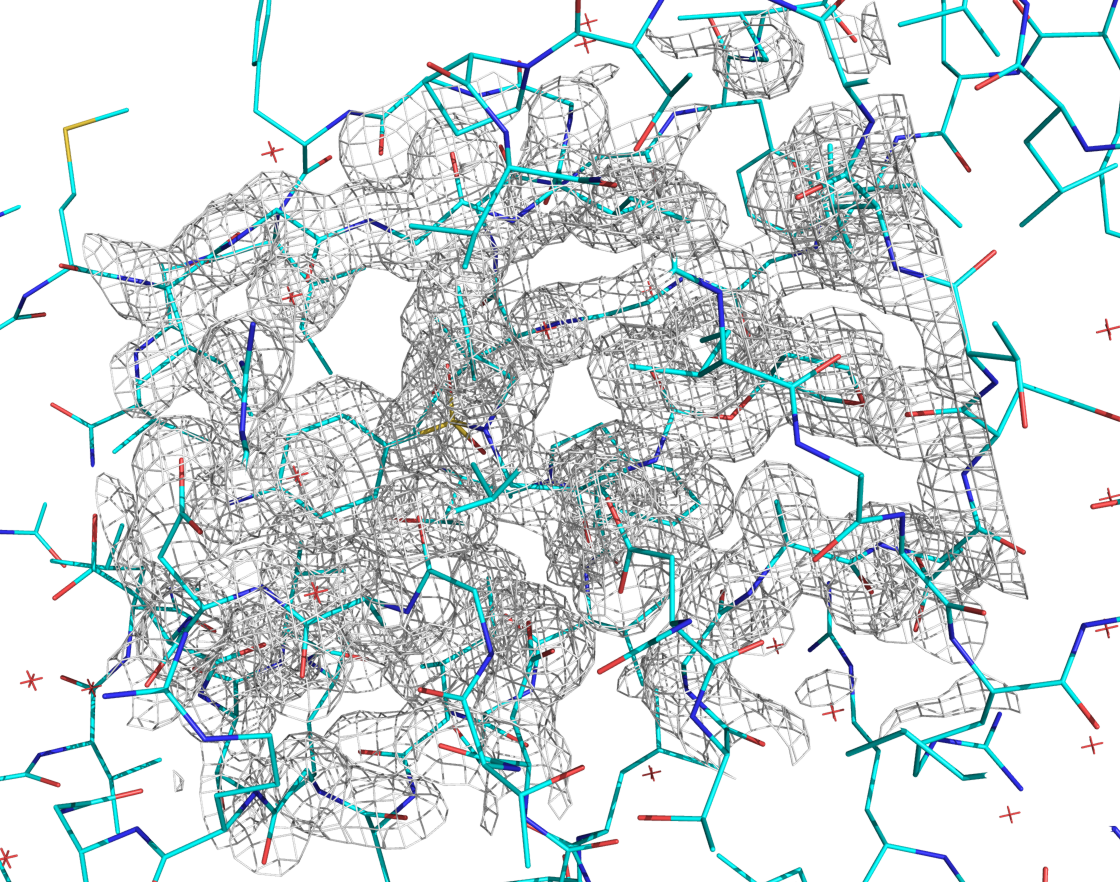Isomesh: Difference between revisions
Jump to navigation
Jump to search
mNo edit summary |
|||
| Line 61: | Line 61: | ||
[[isodot]], [[load]] | [[isodot]], [[load]] | ||
[[Category:Commands| | [[Category:Commands|Isomesh]] | ||
[[Category:States]] | [[Category:States|Isomesh]] | ||
Revision as of 10:08, 20 June 2009
DESCRIPTION
isomesh creates a mesh isosurface object from a map object.
USAGE
isomesh name, map, level [,(selection) [,buffer [,state [,carve ]]]]
- name = the name for the new mesh isosurface object.
- map = the name of the map object to use for computing the mesh.
- level = the contour level.
- selection = an atom selection about which to display the mesh with an additional "buffer" (if provided).
- state = the state into which the object should be loaded (default=1) (set state=0 to append new mesh as a new state)
- carve = a radius about each atom in the selection for which to include density. If "carve" is not provided, then the whole brick is displayed.
Examples
# load the map
load mymap.xplor, themap
# view the isomesh map
isomesh themapobject, themap, 2.0, site, carve=1.6
# create fake map for demo
load $TUT/1hpv.pdb
# set b and q for all atoms
alter all, b=10
alter all, q=1
# make a new map
map_new fake_map, gaussian, 0.5, all
# carved brick
isomesh carved, fake_map, 1.0, resi 200, carve=2.1
color marine, carved
# normal brick
isomesh normal, fake_map, 1.0, resi 200, 2.1
orient resi 200
NOTES
USAGE
If the mesh object already exists, then the new mesh will be appended onto the object as a new state (unless you indicate a state).
- state > 0: specific state
- state = 0: all states
- state = -1: current state
- source_state > 0: specific state
- source_state = 0: include all states starting with 0
- source_state = -1: current state
- source_state = -2: last state in map
MAP LEVELS
- Generally speaking there is some ambiguity with visualization tools as to how map data is to treated: Some map file formats are normalized by convention (in the file data itself) and others do not. Some visualization tools automatically normalize maps upon reading, others do not. PyMOL's default behavior is dependent upon map file type: CCP4 and O/BRIX/DSN6 maps are automatically normalized upon reading (disable via normalize_* settings), other maps types are not. PyMOL's normalization is a straight statistical average of all map points -- this may or may not be what you want. If migrating to PyMOL from another tool, then it is definitely worth comparing how the maps are being represented by creating an equivalent figure in both, making sure that they match, and if they do not, then figuring out why not. From the PyMOL list. Author: Warren DeLano.
